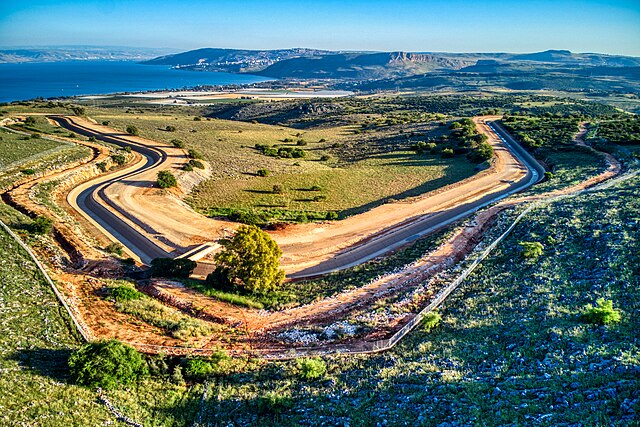National Water Carrier of Israel
The National Water Carrier of Israel is the largest water project in Israel, completed in 1964. Its main purpose is to transfer water from the Sea of Galilee in the north of the country to the highly populated center and the arid south and to enable efficient use of water and regulation of the water supply in the country. It is about 130 kilometers (81 mi) long. Up to 72,000 cubic meters of water can flow through the carrier each hour, totalling 1.7 million cubic meters in a day.
The Hukok Canal, an open canal of the National Water Carrier
Water flows from the pressure pipe above the Sea of Galilee into the Hukok open canal
Water flows from the Hukok open canal into the inverted siphon in Nahal Amud
The inverted siphon in Nahal Amud
The Sea of Galilee, also called Lake Tiberias or Kinneret, is a freshwater lake in Israel. It is the lowest freshwater lake on Earth and the second-lowest lake in the world, at levels between 215 and 209 metres below sea level. It is approximately 53 km (33 mi) in circumference, about 21 km (13 mi) long, and 13 km (8.1 mi) wide. Its area is 166.7 km2 (64.4 sq mi) at its fullest, and its maximum depth is approximately 43 metres (141 ft). The lake is fed partly by underground springs, but its main source is the Jordan River, which flows through it from north to south and exits the lake at the Degania Dam.
Sea of Galilee
Jesus appears on the shore of Lake Tiberias by James Tissot
Jesus and the miraculous catch of fish, in the Sea of Galilee, by Raphael
Southern tip of the lake, seen from Mount Poriya








